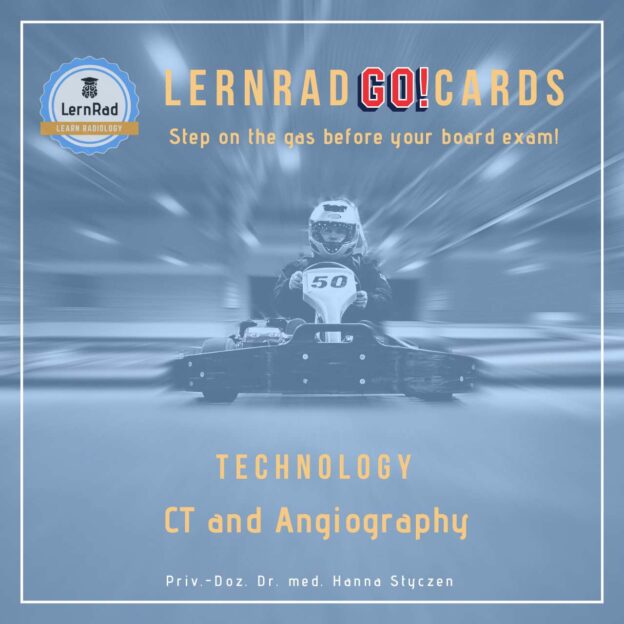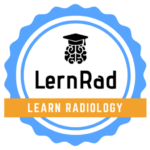In this Go!Cards set, you will find a total of 50 questions and answers on the topic of CT and Angiography to prepare for the Radiology Board Examination. You can quickly review and test the most important facts before the exam to see where your knowledge stands.
Our Go!Cards were developed according to the current European Training Curriculum for Radiology of the European Society of Radiology (ESR).
This set includes 50 questions and answers with the following subchapters:
- Structure and Techniques
- Image Formation
- Important Dosage Terms Part 2
- Image Quality
- Angiography and Fluoroscopy
Tip: You should view the flashcards in full-screen mode, then they appear a bit larger. 🙂 We recommend using Chrome or Edge as a browser, as other browsers may display minor errors with the Go!Cards.
For the duration of your subscription (which will be automatically renewed each month if not canceled), you have full access to the Go!Cards. You can cancel your subscription at any time. Sharing your access data with third parties is, of course, not permitted (see also our general terms and conditions).
The specific learning objectives corresponding to the ESR’s European Radiology Training Curriculum for Radiology are:
B-I-15 Principles of Imaging Technology & Molecular Imaging
Knowledge CT
- To explain the relative value of a CT examination for the various organ systems and indications
- To have a good understanding of the physical basis of image formation of computed tomography and of the physics of helical and multidetector CT
- To have a basic understanding of dual-source CT
- To list the major sources of artefacts in CT
- To define the scale of Hounsfield units and to explain the principle of window centre and width
- To list the optimal setting of window centre and width for various organs and tissues
- To list the normal levels of attenuation (in HU) for the various organs and pathological processes in the body
- To describe the principles of optimising sequence protocols for a variety of CT scanner types
- To understand the principles of perfusion imaging with CT
- To understand the principles of CTA protocols, including contrast materials used and reconstruction techniques
- To define CT protocols for the various organs and pathological processes in the body
- To explain the principles of reconstruction algorithms and kernels
- To have a good understanding of CT-dosimetry




